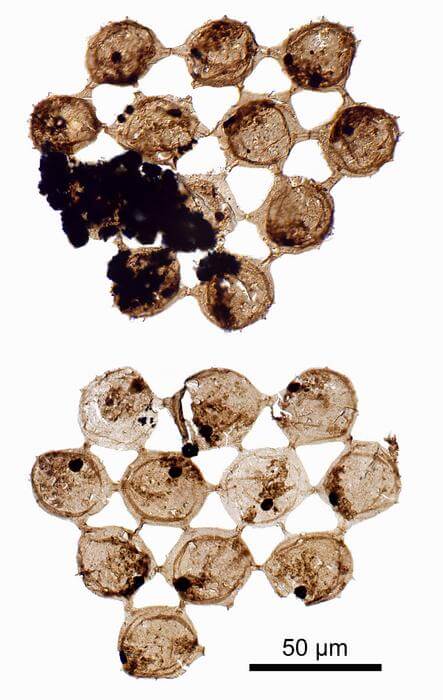Leicester, United Kingdom – It's hard to fathom how short a time humans have lived on Earth. Before we appeared, the planet revolved around the sun for billions of years. Now, researchers from the University of Leicester have discovered a new type of microbe that provides a glimpse into the distant past of our planet's oceans – half a billion years ago.
The tiny, fossilized organisms resemble modern-day algae, the researchers explain. As such, they believe the discovery could provide much-needed insights into the climate changes that have affected our oceans. On a microscopic scale, fossils look like spiny balls stuck together.
„When I first saw them, I didn't know what they were. I wondered if they were animal eggs or a new species. There was nothing like them, living or extinct,” said Dr Tom from the University of Leicester's School of Geology, Geology and Environment. Harvey says. Media release.
As more and more specimens appeared, Dr. Harvey was able to identify similarities with modern green algae floating within the plankton of many ponds and lakes.
„The fossils have a colonial structure similar to modern algae, with cells joined together, explaining their neat, geometric arrangements. Yet, surprisingly, the fossil examples lived in the ocean, providing a rare glimpse of early marine plankton,” Harvey continues.

The research team stresses that these fossils are particularly important because of their incredible age. They lived at a time when animals first began to evolve (the Cambrian 'explosion' of life) – their shape/appearance is no coincidence. In the modern environment, phytoplankton serve as the basic food source for all life in the oceans. However, the current groups of phytoplankton have evolved relatively recently. Therefore, scientists do not know which groups lived in the Cambrian oceans before those years.
„When we look at modern plankton, we see algae forming colonies when animals try to eat them. This is a defense mechanism. So, the presence of colonial algae during the Cambrian suggests that early animals evolved to feed on plankton, starting a predator-prey relationship that has continued ever since.” Dr. Harvey explains.
„Given that plankton are the foundation of life in the oceans and that fossil plankton help create ancient climate models, these tiny fossils play a huge role in telling the history of life on Earth.”
This discovery will prompt a reevaluation of other early microbial fossils. For a long time, scientists believed that the spiny fossil balls found separately were called dormant cysts of single-celled life. Dr. Harvey says this work challenges that notion in a big way.
„I wonder if we've got it all wrong, and there are actually a lot of these microfossils living in colonies on plankton. It's easy to accidentally break them when we extract fossils from rocks, so we all have to go back to the collections, back to our labs, and find out how common they really are,” Harvey said. concludes.
The study Published in Proceedings of the Royal Society B Biological Sciences.
You may also be interested in:

„Oddany rozwiązywacz problemów. Przyjazny hipsterom praktykant bekonu. Miłośnik kawy. Nieuleczalny introwertyk. Student.
